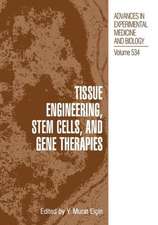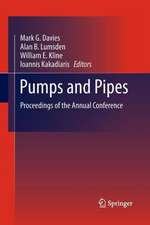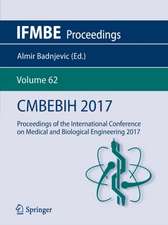Biomaterials: An Introduction
Autor J. Parken Limba Engleză Paperback – 25 noi 2012
Preț: 896.34 lei
Preț vechi: 943.52 lei
-5% Nou
Puncte Express: 1345
Preț estimativ în valută:
171.54€ • 178.43$ • 141.61£
171.54€ • 178.43$ • 141.61£
Carte tipărită la comandă
Livrare economică 14-28 aprilie
Preluare comenzi: 021 569.72.76
Specificații
ISBN-13: 9781468434255
ISBN-10: 146843425X
Pagini: 264
Ilustrații: X, 251 p.
Dimensiuni: 152 x 229 x 14 mm
Greutate: 0.36 kg
Ediția:1979
Editura: Springer Us
Colecția Springer
Locul publicării:New York, NY, United States
ISBN-10: 146843425X
Pagini: 264
Ilustrații: X, 251 p.
Dimensiuni: 152 x 229 x 14 mm
Greutate: 0.36 kg
Ediția:1979
Editura: Springer Us
Colecția Springer
Locul publicării:New York, NY, United States
Public țintă
ResearchCuprins
1 • Introduction.- Further Reading.- 2 • Characterization of Materials.- 2.1. Mechanical Properties.- 2.2. Thermal Properties.- 2.3. Surface Properties and Adhesion.- Problems.- Further Reading.- 3 • The Structure of Solids.- 3.1. Bonding between Atoms.- 3.2. Arrangement of Atoms.- 3.3. Imperfections in Structures.- 3.4. Amorphous Solids.- Problems.- Further Reading.- 4 • Metals and Alloys.- 4.1. Alloys and Phase Diagrams.- 4.2. Imperfections and Strengthening Mechanisms.- 4.3. Corrosion of Metals.- Problems.- Further Reading.- 5 • Ceramic Materials.- 5.1. Atomic Bonding and Arrangement.- 5.2. Physical Properties.- 5.3. Deterioration of Ceramic Materials.- 5.4. Carbons.- Problems.- Further Reading.- 6 • Polymeric Materials.- 6.1. Polymerization.- 6.2. Effect of Structural Modification on Properties.- 6.3. Properties of Polymers.- 6.4. Deterioration of Polymers.- 7 • Structure-Property Relationships of Biological Materials.- 7.1. Structure of Proteins and Polysaccharides.- 7.2. Structure-Property Relationship of Tissues.- Problems.- Further Reading.- 8 • Tissue Response to Implants.- 8.1. Wound Healing Process.- 8.2. Body Response to Implants.- Problems.- Further Reading.- 9 • Soft Tissue Replacement I: Sutures, Skin, and Maxillofacial Implants.- 9.1. Sutures, Surgical Tapes, and Adhesives.- 9.2. Percutaneous and Skin Implants.- 9.3. Maxillofacial and Other Soft Tissue Augmentation.- Problems.- Further Reading.- 10 • Soft Tissue Replacement II: Blood Interfacing Implants.- 10.1. Blood Compatibility.- 10.2. Implants for Blood Interface.- Problems.- Further Reading.- 11 • Hard Tissue Replacement I: Long Bone Repair.- 11.1. Internal Fracture Fixation Devices.- 11.2. Materials Used for Internal Fracture Fixation Devices.- Problems.- Further Reading.- 12• Hard Tissue Replacement II: Joints and Teeth.- 12.1. Structure and Function of Joints.- 12.2. Various Joint Replacements.- 12.3. Dental Implants.- Problems.- Further Reading.- Appendix: SI Units.- Name Index.



























